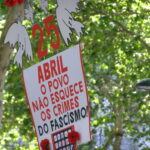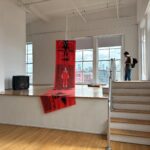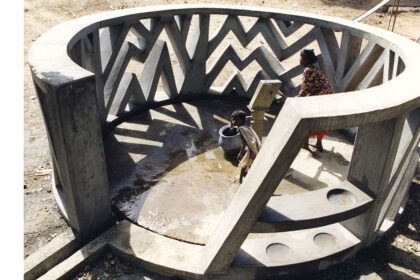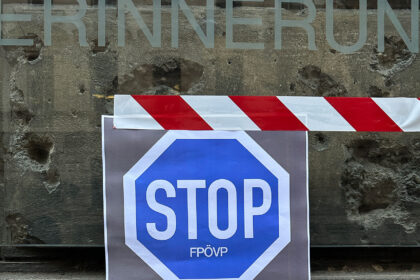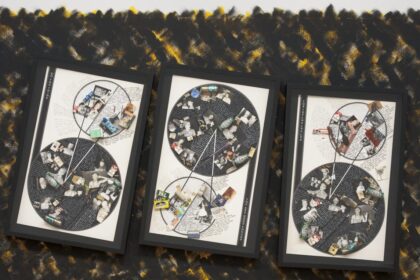Laboratory Italy: The Meloni Government and Postfascist Intellectuals.
Marco Baravalle
The newly elected (2022) Meloni government in Italy is pursuing three major constitutional reforms. First, they propose changing how the prime minister is selected – moving from the current parliamentary appointment system to direct election by voters. This would significantly increase the prime minister’s power by giving them a direct mandate from the people rather than depending on parliamentary support. The second reform concerns regional autonomy. Currently, Italy’s regions have varying levels of self-governance, with the national government in Rome controlling most financial resources. The proposed “differentiated autonomy” would redirect more funding to Italy’s northern regions, which are already the country’s wealthiest areas. This reform appears designed to satisfy Meloni’s coalition partners, the Lega Nord (Northern League) party, which has traditionally represented northern Italian interests and maintains its strongest support in these prosperous industrial regions. The third initiative involves reforming Italy’s justice system, though the specific details of this proposal are not covered here.
In addition, there is a security bill that simply aims to eliminate any possibility of dissent. Among the most serious aspects are: the so-called “anti-Gandhi” measure, which imposes up to 2 years of punishment for anyone engaging in passive resistance (currently not considered a criminal offense) to law enforcement, and an increase in penalties from 5 to 15 years for active resistance. Penalties are also increased for those blocking roads or occupying a house. It is clear that the aim is to criminalize the right to strike, movements for climate justice, for housing rights, and for the liberation of Palestine. Furthermore, there are provisions targeting subaltern groups such as migrants (who will no longer be able to buy a SIM card without showing their residence permit) and inmates: penalties are increased in case of a revolt, and imprisonment is also foreseen for pregnant women and mothers of infants (categories previously exempt from jail). Finally, one provision of the same bill allows for the decriminalization of actions by secret service agents who carry out illegal (including potentially violent) acts while infiltrated in criminal organizations. This is a disturbing measure for a country marked by the “strategy of tension” implemented in the 1970s, when “deviant” sectors of the intelligence services and neo-fascist groups converged to impose a return to order, if not a directly authoritarian shift. How could we not mention, finally, the outsourcing of the deportation of illegal migrants, which is planned to be entrusted to Albania, where Italy has built, at taxpayers’ expense, a large detention center for migrants. The structure is currently empty because the European Court of Justice must rule on the validation of detentions.
When it comes to culture and art institutions, however, aided by a clumsy recovery of Gramsci and the theory of cultural hegemony, the government has begun to “hegemonize” all available seats. [1] From the public TV, renamed “TeleMeloni”, to museums, theaters, and the Venice Biennale. The current Minister of Culture, a well-groomed journalist named Alessandro Giuli, boasts in his curriculum his youthful militancy in Meridiano Zero, a neo-Nazi formation with esoteric-pagan tendencies. Before being appointed, Giuli was assigned to the direction of the MAXXI, Italy’s leading contemporary art museum. He will not be remembered for anything other than inviting two idols of Italian trash TV (beloved by the right), who engaged in a long conversation with vulgar and openly sexist tones, provoking protests from the museum staff. [2] Fratelli d’Italia (Meloni’s party) also imposed Luca Fusco as the director of the Teatro di Roma. “Vogliamo Tutt’Altro,” a network of theater workers formed in response to this blitz, points out that in the theaters directed by Fusco, female directors and playwrights invited are less than 7%, while authors under 40 account for just 2.5%. [3]
Despite this rush toward cultural hegemony, there is one fact. The government recently cut 90% of the funding promised to the Ministry of Culture. [4] It has thus aligned itself with a historical trend of underfunding the cultural sector, this time coupled with a concurrent surge in military spending. In Venice, the situation is perhaps even more complex. For over a year now (since early 2024), there has been an assembly of self-organized art workerscalled Biennalocene. It is an almost unique example of artistic autonomy, as it was born out of a performance (co-curated by the Institute of Radical Imagination and Sale Docks), which developed into a real assembly against the endemic precarious working conditions of the city’s cultural workers. [5] In the meantime, the government appointed writer Pietrangelo Buttafuoco as president of the Biennale. Years ago, during a television appearance, he performed a monologue about Piazzale Loreto, the square in Milano where Mussolini’s body, his partner’s, and those of several fascist leaders were hung (upside down) after the Liberation. Buttafuoco’s indignant argument was: “look at what Italians are capable of!”. Now, while desecrating a corpse is never a source of pride, wouldn’t it be more urgent to continue asking the same question in relation to the invention and the affirmation of Fascism? [6]
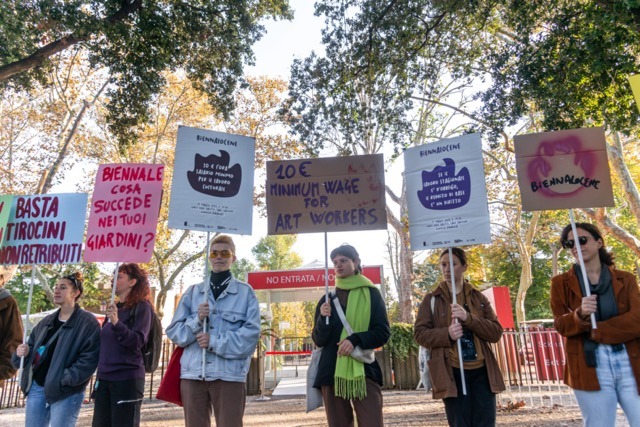
The Biennale under Buttafuoco’s leadership, so far, has shown a double face. On the one hand, a complete alignment with Meloni’s Zionist agenda ; on the other, some choices not in line with the fears of a reactionary shift. One example of the first case is the response of the Venetian foundation to the mobilization of ANGA (Art Not Genocide Alliance), an international campaign that called for the withdrawal of the Israeli pavilion from the exhibition. The goal was achieved, but only thanks to pressure and a direct action during the opening of the exhibition, when more than two hundred pro-Palestinian activists flooded the Giardini. [7] For its part, the Biennale did not even waste a word in solidarity toward the Palestinians, as it had rightly done toward Ukrainians, condemning the Russian invasion. The Biennale had limited itself to responding laconically that it was not in its power to exclude any country, leaving the burden of political positioning to Gennaro Sangiuliano (now former culture minister of the Meloni government) who labeled ANGA’srequest as an “Unacceptable diktat”, reiterating Italy’s and the Biennale’s “solidarity with Israeli artists and citizens”. [8]
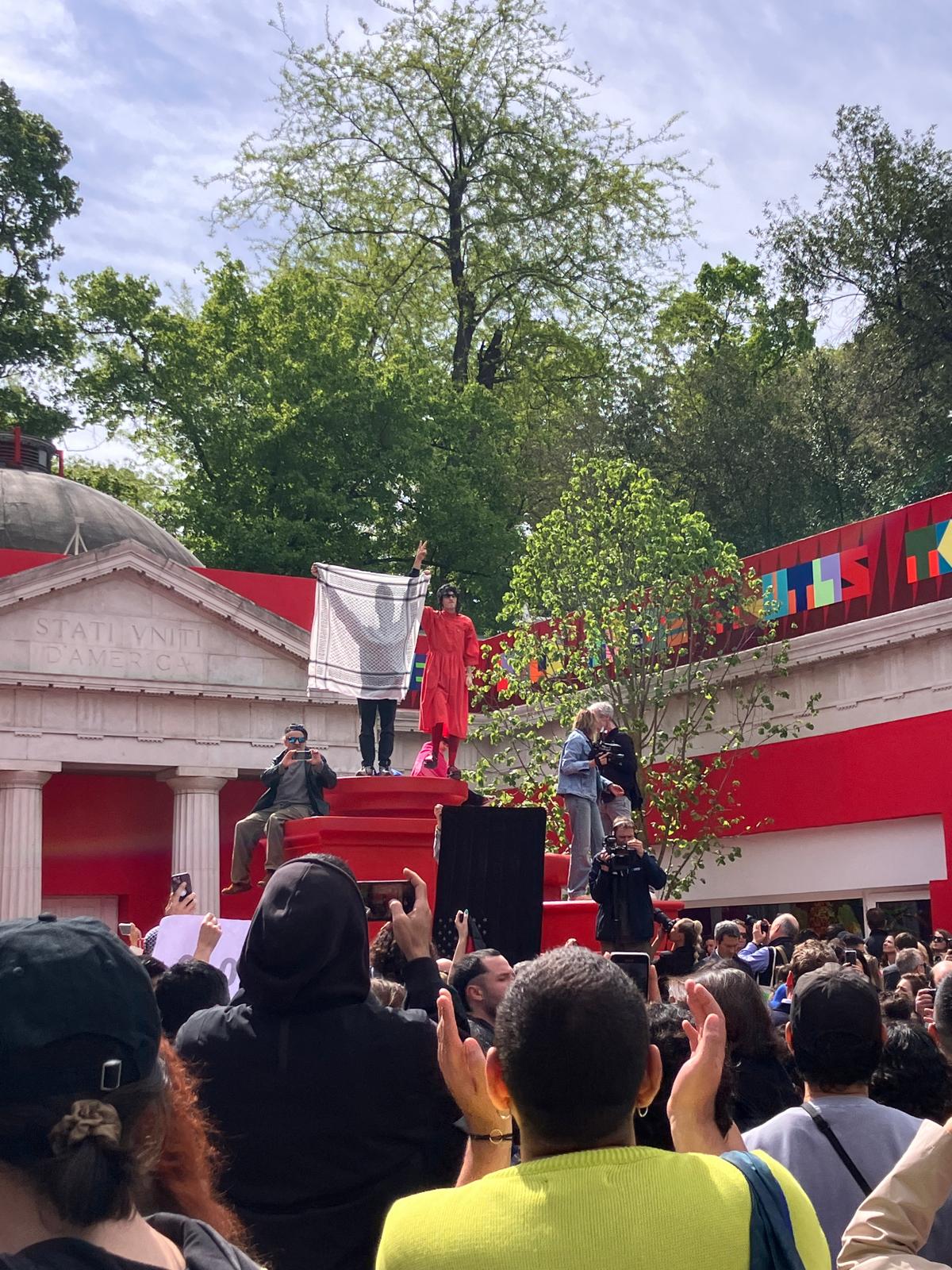
On the other hand, if we expected Buttafuoco to appoint an Italian-white-male-cis-hetero-conservative-nationalist curator for the next art Biennale, well, we were wrong. He appointed instead Koyo Kouoh, a Cameroonian curator who caused a scandal in October 2024 during a conference at the Pinakothek der Moderne in Munich, criticizing the violence of Israel against Palestinians and Lebanese. [9] Therefore, regarding the Biennale, the institutional trend of the last 20 years seems confirmed. The foundation, as an institution, remains completely closed to real alliances with workers, movements, and subaltern subjects, but the curatorial choices move in the direction of meeting the demands of the global art circuit of liberal democracies. Let’s breathe a sigh of relief then (I mean it), but prepare to continue a fight that is not new to us: the one against the contemporary art system as a dispositive of capture and commodification of radical demands.
In general, what kind of intellectual is, today, what is commonly called a “postfascist” in Italy? Post-fascist is an ambiguous definition, and in any case, it is not suitable in the Anglo-Saxon context, because, unlike the term “postcapitalist,” which indicates different trends in political-ideological opposition to capital, the postfascist does not oppose fascism at all; rather, he updates it, perhaps distances himself from it, but continues to recognize it as a cultural matrix. A guiding light for this generation of intellectuals today convened by Meloni is the self-styled baron Julius Evola, the only Italian exponent of that Conservative Revolution that developed in the Republic of Weimar and Austria between 1918 and 1933, providing Nazism with an important breeding ground. Up until 1926 he was a painter and poet, closer to Dada (seen as an answer to a vague existential crisis of values, completely ignoring its refusal of interventionism during World War I) than to Futurism, which he saw as too future oriented, and overly dazzled by progress and machinery. Evola, among other things, supported the superiority of the Aryan race over Jews, adding to biological considerations a supposed spiritual superiority of the former over the latter. Aristocratic and anti-democratic, he was a proponent of a pre-Christian hierarchical and warrior tradition. In addition to despising Judaism, he criticized Christianity for overturning the old social hierarchies of Europe through values such as brotherhood, equality, and charity. He admired Islam (at least when it did not interfere with colonial domination), praising, among other things, its warrior spirit, its lack of anthropomorphism, and its spirituality as the foundation of community. Did these theories play a role in Buttafuoco’s conversion to Islam? In any case, many of the intellectuals close to Meloni are fascinated by a number of Evola’s aspects: contempt for democracy, an initiatory idea of knowledge, the rejection of modernity, the fascination with esotericism, the centrality of tradition, and the search for universal, super-historical cultural values.
Finally, another aspect unites Meloni’s intellectuals: a false self-narrative. They like to present themselves as outsiders, as if the right had never governed Italy before (but it’s true that Berlusconi didn’t care about intellectuals) . Indeed, Giuli had been an established journalist and a regular guest on TV long before the Meloni government. Likewise, Buttafuoco is an award-winning writer, whose books have been published by important publishing houses for decades. Luca Fusco had directed, before Rome, the Teatro Stabile del Veneto and then the one in Naples. In short, they were not outsiders even before Meloni, but they like to feel and present themselves as such. Recently, Politico wrote “Who do you call if you want to speak to Europe? If you’re Elon Musk — the world’s richest man and a key adviser to United States President-elect Donald Trump — the number you dial belongs to Giorgia Meloni”. [10] Despite its meaningless weight in the world arena, Italy is then becoming a globally recognized laboratory for the postfascist right. It is up to us to analyze it with a fresh gaze and to make it into a laboratory of alternatives, resistances and lines of flight.
Marco Baravalle is a researcher, curator and activist. He is a member of Sale Docks, a collective and independent space for visual arts, activism, and experimental theater located in what had been an abandoned salt-storage facility in Dorsoduro, Venice, Italy. Founded in 2007, its programming includes activist-group meetings, formal exhibitions, and screenings. He is a member of IRI (Institute Of Radical Imagination), a collective inviting activists, artists, curators and cultural producers to share knowledge on a continuous base with the aim of defining and implementing zones of post-capitalism in Europe’s South and the Mediterranean. Baravalle teaches Phenomenology of Contemporary Art at the MA in Visual Arts and Curatorial Studies of NABA (Nuova Accademia di Belle Arti, Milan), and Curatorship at Ca’Foscari University in Venice. From 2018 to 2021 Baravalle was research fellow at “INCOMMON. In praise of community. Shared creativity in arts and politics in Italy (1959-1979)”, a project hosted by IUAV, University of Venice. He has published articles and essays on the relationship between art, activism and ecologies, with focus on curating. He has co-edited two books: “Art For UBI Manifesto” (Bruno, 2022) and “Art For Radical Ecologies Manifesto” (Bruno 2024). He has authored a monograph in Italian titled “L’autunno Caldo del Curatore. Arte, Neoliberismo, Pandemia” (Marsilio, 2021)
Notes:
1. https://foreignpolicy.com/2024/12/13/giorgia-meloni-antonio-gramsci-italy-hegemony-culture/
2.https://www.huffingtonpost.it/politica/2023/07/01/news/turpiloquio_di_sgarbi_al_museo_maxxi_monta_la_protesta_si_dimetta-12547277/
3. https://www.angelomai.org/vogliamo-tuttaltro/
4. https://www.rainews.it/articoli/2024/11/–90-dei-fondi-fsc-al-ministero-della-cultura-lultimo-atto-di-fitto-prima-di-volare-a-bruxelles-c3b6afd3-3f25-444f-a002-7accf3dae3d6.html
5. https://www.biennalocene.com/
6. https://www.youtube.com/watch?v=xbzWfSo5X2s
7. https://hyperallergic.com/903608/activists-say-no-to-the-genocide-pavilion-in-biennale-protest-against-israel/
8. https://www.veneziatoday.it/cronaca/ministro-sangiuliano-difende-biennale-israele.html
9. https://www.merkur.de/kultur/herzog-franz-lecture-museumschefs-distanzieren-sich-von-koyo-kouoh-pinakothek-der-moderne-zr-93371320.html#google_vignette
10.https://www.politico.eu/list/politico-28-class-of-2025/giorgia-meloni/


